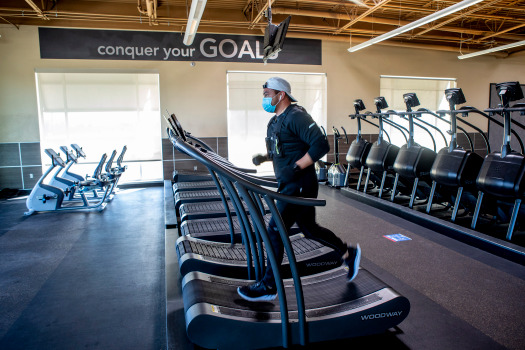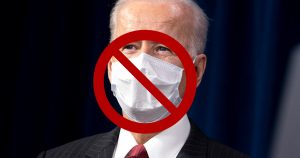REDWOOD CITY, CA – FEBRUARY 24: Anthony Garcia returns to indoor workouts for the first time in months at 24 Hour Fitness in Redwood City, Calif., Wednesday, Feb. 24, 2021, after San Mateo County moved into the red tier. (Karl Mondon/Bay Area News Group)
Counties across California will likely be allowed to ease restrictions on businesses and activities more quickly in the coming weeks, as part of an accelerated reopening strategy state officials announced in tandem with a new policy targeting vaccine supplies to hard-hit communities.
In the Bay Area, the change could allow Contra Costa County to join Alameda, Santa Cruz and Solano counties in leaving the most-restrictive stage of the state’s coronavirus regulations as soon as next week.
And other Bay Area counties that have already graduated out of the “purple” tier, as the tightest limits are known, could in the near future have a quicker path to adopting even less-restrictive rules.
State officials late Wednesday announced a new strategy of reserving 40% of COVID vaccine doses for less-wealthy neighborhoods that have borne a disproportionate share of coronavirus cases and deaths.
They are pairing that plan with relaxed standards for moving through the color-coded system that regulate activities such as indoor dining, high school sports and the size of gatherings in each of California’s 58 counties — though they stressed the state will still have some of the tightest COVID restrictions in the country.
“As we achieve higher levels of vaccine in our hardest-hit communities, we feel more confident that more activities can occur,” Health and Human Services Secretary Mark Ghaly said on a briefing call with reporters Thursday. But, he added, “We will keep our foot on the brake, not on the gas.”
The new standards would allow counties to move out of the purple tier and into the less-restrictive red tier — which allows for indoor activities at restaurants, gyms and other establishments — if they record an adjusted case rate of less than 10 cases per 100,000 residents per day for two straight weeks. The current standard is 7 cases; state data showed Contra Costa County had a case rate of 9.5 this week.
The state will adopt the easier standard once it has distributed 2 million doses of COVID vaccines to residents of census tracts that rank in the bottom quarter of a health equity metric known as the California Healthy Places Index. The index grades census tracts based on income, education levels and other factors; throughout the pandemic, areas that rank lowest in the metric have seen higher rates of COVID infections.
Ghaly said Thursday that the state has already distributed about 1.6 million doses to residents of those areas, and estimated it will hit the 2 million-dose mark “sometime in the next week or two.”
If that happens on Tuesday or later, and Contra Costa County’s case rate remains below 10, the county would advance into the red tier automatically. Without the new standards, the county would have to get its case rate below 7 for two straight weeks to move forward.
The strategy will likely have an even bigger impact in Southern California and the Central Valley, where nearly every county remains in the purple tier.
The looser standards probably won’t immediately affect Alameda, Santa Cruz and Solano counties, which are already on pace to enter the red tier next week. Same with Santa Clara, San Mateo, San Francisco and Marin counties, which have all entered that stage over the past two weeks.
But the new rules could affect those counties in the near future: Once the state distributes another 2 million doses to residents of neighborhoods in the index’s lowest quartile, for a total of 4 million, Ghaly said officials would further loosen the rules for entering the orange and yellow reopening stages.
He did not say precisely how the criteria for those tiers would change, or how long it is expected to take for the state to distribute 2 million doses in its most vulnerable communities.
Gov. Gavin Newsom said Tuesday that California expects to receive a total of about 1.6 million doses next week, though supplies are expected to increase with the addition of a new single-shot Johnson & Johnson vaccine.



















